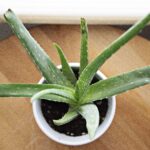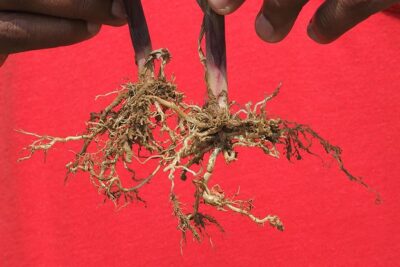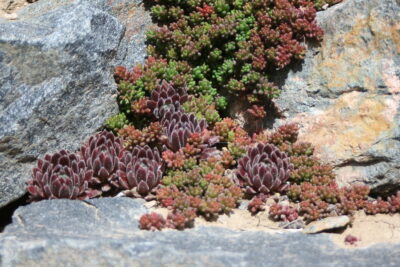
Gentle Techniques for Removing Succulent Offshoots

Succulents have become increasingly popular in recent years, adorning homes and gardens with their vibrant colors and unique shapes. These resilient plants are known for their ability to store water in their fleshy leaves, making them easy to care for and perfect for those without a green thumb. One of the most exciting aspects of growing succulents is the ability to propagate them, creating new plants from offshoots or "pups" that grow from the main plant. While removing these offshoots may seem simple, it is important to do so gently to avoid damaging the parent plant and ensure the successful growth of the new plant.
We will explore some gentle techniques for removing succulent offshoots. We will discuss the best time to remove offshoots, the tools you will need, and step-by-step instructions on how to safely separate the offshoots from the parent plant. Additionally, we will provide tips on caring for the newly separated offshoots to promote their healthy growth. Whether you are a seasoned succulent enthusiast or just beginning to explore the world of succulents, this article will provide you with the knowledge and techniques needed to successfully propagate your succulents and expand your collection.
- Use a clean, sharp knife to carefully cut off the offshoot from the main plant
- Allow the cut to dry and callous over for a few days before planting
- Gently twist or wiggle the offshoot to separate it from the main plant
- Use a pair of clean, sterilized pruning shears to cut off the offshoot
- Dip the cut end of the offshoot in rooting hormone before planting
- Frequently Asked Questions
Use a clean, sharp knife to carefully cut off the offshoot from the main plant
When it comes to removing offshoots from your succulent plants, it's essential to use the right techniques to ensure a successful separation. One of the most gentle and effective methods is to use a clean, sharp knife.
Start by inspecting the offshoot and identifying the point at which it connects to the main plant. This is known as the "junction." Using the knife, make an incision just below the junction, ensuring that the blade is clean and sterilized to prevent any potential infections.
Hold the offshoot firmly but delicately, and gently wiggle it back and forth to loosen it from the main plant. Apply a small amount of pressure if necessary, but be cautious not to damage either the offshoot or the main plant.
Once the offshoot is successfully detached, set it aside for a few days to allow the wound to callous over. This will help prevent any potential rotting or infections. During this time, it's crucial to keep the offshoot in a warm, dry location away from direct sunlight.
After the callousing period, you can now propagate the offshoot by planting it in well-draining soil. Make sure to choose a pot that is appropriate for the size of the offshoot and fill it with a mixture of cactus soil and perlite or sand for optimal drainage.
 Learn How to Successfully Propagate Your Black Rose Succulent
Learn How to Successfully Propagate Your Black Rose SucculentGently press the offshoot into the soil, leaving the calloused end exposed. Ensure that the offshoot is stable and upright, and water it sparingly to avoid overwatering. Gradually increase the amount of water as the offshoot establishes its root system.
Remember, it's essential to be patient during this process as succulent offshoots take time to root and grow. With proper care and gentle techniques, you'll soon have a flourishing new succulent to add to your collection.
Allow the cut to dry and callous over for a few days before planting
One of the most important steps when removing succulent offshoots is to allow the cut to dry and callous over before planting. This is crucial to ensure the success of the propagation process.
When you make a clean cut to remove the offshoot from the mother plant, it is essential to let the cut end dry out and form a callus. This callus acts as a barrier against moisture and helps prevent the cutting from rotting when it is planted.
To allow the cut to dry and callous over, place the offshoot in a dry and well-ventilated area for a few days. Avoid exposing it to direct sunlight or excessive moisture during this time. The callus will gradually form, creating a protective layer.
Once the cut end has calloused over, you can proceed with planting the offshoot in well-draining soil and providing it with the necessary care to encourage root development.
 Step-by-Step Guide: How to Successfully Propagate Succulents at Home
Step-by-Step Guide: How to Successfully Propagate Succulents at HomeRemember, patience is key during this process. Allowing the cut to dry and callous over ensures a higher chance of successful root formation and future growth for your succulent offshoots.
Gently twist or wiggle the offshoot to separate it from the main plant
When it comes to removing succulent offshoots, it's important to handle them with care to ensure their successful separation from the main plant. One gentle technique is to twist or wiggle the offshoot to encourage it to detach naturally.
This method involves applying minimal force and avoiding any sudden movements that could potentially damage the offshoot or the parent plant. By gently twisting or wiggling the offshoot, you allow it to loosen its grip and separate from the main plant.
It's crucial to exercise caution during this process to prevent any unnecessary harm. Make sure to hold the parent plant firmly while gently manipulating the offshoot. This will help maintain stability and reduce the risk of accidentally breaking either plant.
Remember, the goal is to separate the offshoot without causing any harm, allowing it to thrive on its own. So, take your time and be patient while performing this technique.
Tools you may need:
- Gardening gloves
- Garden shears or a sharp knife
Although not required, having the following tools on hand can make the process easier and safer:
Gardening gloves: Wearing gloves will provide an extra layer of protection for your hands and fingers. This is especially helpful if you are dealing with prickly succulents that have sharp thorns.
 The Cause of Tall Growth and Limited Spreading in Succulents
The Cause of Tall Growth and Limited Spreading in SucculentsGarden shears or a sharp knife: In some cases, you might encounter offshoots that are tightly attached to the parent plant. Using garden shears or a sharp knife, carefully cut through the connecting stem to facilitate separation.
Note: Before using any tools, ensure they are clean and sterilized to prevent the spread of diseases or infections.
Steps to gently remove a succulent offshoot:
- Prepare your tools and workspace by gathering all the necessary equipment.
- Put on your gardening gloves to protect your hands.
- Assess the offshoot and identify the point of attachment to the parent plant.
- Gently hold the parent plant with one hand, providing stability and support.
- With your other hand, delicately twist or wiggle the offshoot back and forth, applying slight pressure.
- Continue this gentle twisting or wiggling motion until the offshoot detaches from the parent plant.
- If the offshoot is firmly attached, carefully use garden shears or a sharp knife to cut through the connecting stem.
- Once separated, place the offshoot in a suitable container or prepared soil for propagation.
By following these gentle techniques and taking the necessary precautions, you can safely and effectively remove succulent offshoots from their parent plants. This allows for successful propagation and the growth of new, independent succulents.
Use a pair of clean, sterilized pruning shears to cut off the offshoot
When it comes to removing succulent offshoots, it's important to use gentle techniques to ensure the health and vitality of your plants. One effective method is to use a pair of clean, sterilized pruning shears to carefully cut off the offshoot.
Start by examining the offshoot and identifying the point where it connects to the main plant. This is usually where you'll find a small cluster of leaves or a stem emerging from the parent plant. It's important to make the cut as close to the main plant as possible to minimize any potential damage.
Before proceeding, make sure your pruning shears are clean and sterilized to prevent the spread of any diseases or pests. You can sterilize them by wiping the blades with rubbing alcohol or a household disinfectant. This step is crucial in maintaining the overall health of your succulents.
 Guide: How to Successfully Propagate an Ogre Ear Succulent
Guide: How to Successfully Propagate an Ogre Ear SucculentOnce your pruning shears are ready, carefully position them just above the point where the offshoot meets the parent plant. Gently squeeze the handles of the shears to make a clean, precise cut. Avoid applying excessive pressure, as this can cause unnecessary damage to the offshoot or the main plant.
Pro tip: If the offshoot is particularly large or tough, you might consider using a small saw or a sharp knife instead of pruning shears. This will allow for a cleaner cut and reduce the risk of any tearing or jagged edges.
After removing the offshoot, take a moment to examine the cut. It should be smooth and even, without any rough edges or splintered sections. If you notice any irregularities, use a pair of gardening scissors or a fine-grit sandpaper to gently smooth out the edges.
Important: Do not discard the offshoot after removal! It can be propagated and grown into a new succulent plant. Simply let the cut end of the offshoot dry for a few days until it forms a callus, then plant it in well-draining soil and provide it with proper care and attention.
Remember, practicing gentle techniques when removing succulent offshoots is key to maintaining the health and beauty of your plants. By using clean, sterilized tools and making precise cuts, you can ensure the success of both the parent plant and the newly propagated offshoot.
Dip the cut end of the offshoot in rooting hormone before planting
When it comes to removing succulent offshoots, it's important to take gentle measures to ensure the health and successful propagation of the plant. One effective technique is to dip the cut end of the offshoot in rooting hormone before planting it.
 Alternative Methods of Propagating Succulents: Beyond Seeds
Alternative Methods of Propagating Succulents: Beyond SeedsRooting hormone is a natural or synthetic substance that helps stimulate root growth in plants. It contains hormones like auxins, which promote root development and increase the chances of successful propagation. By using rooting hormone, you give the offshoot a head start in establishing its own root system.
To apply the rooting hormone, simply dip the cut end of the offshoot into the powder or liquid form of the hormone. Ensure that the cut end is well-coated, as this will maximize the absorption of the hormone. Afterward, gently tap off any excess hormone to prevent over-application.
Once the offshoot is coated in rooting hormone, it's time to plant it. Choose a well-draining potting mix specifically formulated for succulents. This type of soil will provide the right balance of moisture and aeration for the offshoot to thrive.
Before planting, make sure the offshoot has calloused over. This means that the cut end has formed a dry, protective layer, which reduces the risk of rot and infection. Allow the offshoot to callous for at least a day or two before proceeding with planting.
When planting the offshoot, create a small hole in the soil and gently place the cut end into it. Make sure the offshoot is positioned upright, with the calloused end inserted about an inch or two into the soil. Avoid burying the offshoot too deeply, as this can lead to issues with rot.
Once the offshoot is planted, avoid watering it right away. Succulents are adapted to survive in arid conditions and prefer dry soil. Wait until the soil is completely dry before giving the offshoot its first watering. This will help prevent issues like root rot.
Remember to place the newly planted offshoot in a bright location with indirect sunlight. Too much direct sunlight can cause sunburn and damage the delicate offshoot. Gradually increase the exposure to sunlight over time to acclimate the plant to its new environment.
 Can Succulent Plants Reproduce and Become Pregnant?
Can Succulent Plants Reproduce and Become Pregnant?With these gentle techniques, you can remove succulent offshoots and successfully propagate new plants. The use of rooting hormone and proper planting methods will increase the chances of healthy root development and overall growth. Enjoy expanding your succulent collection with these effective techniques!
Frequently Asked Questions
1. How do I remove offshoots from my succulent without causing damage?
Use a clean and sharp knife or garden shears to carefully cut the offshoot at the base, ensuring you remove a portion of the stem. Allow the cut to dry for a few days before planting the offshoot.
2. Can I propagate succulent offshoots without cutting them off?
Absolutely! Some succulent offshoots can be gently twisted or wiggled off the parent plant. However, this method may not be suitable for all succulent varieties, so it's best to research the specific plant you have before attempting this technique.
3. Can I remove offshoots from my succulent at any time of the year?
While succulents can be propagated throughout the year, it's generally recommended to remove offshoots during the active growing season, which is in spring or summer. This will increase their chances of successful rooting and growth.
4. How long does it take for succulent offshoots to root and grow into new plants?
The rooting time for succulent offshoots can vary depending on the species and environmental conditions. On average, it takes around 2-6 weeks for the offshoots to develop roots and start growing into new plants.
If you want to read more articles similar to Gentle Techniques for Removing Succulent Offshoots, you can visit the Propagation category.






You Must Read